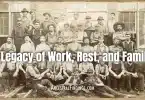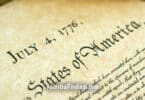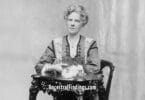The United States began issuing passports during the American Revolution before the war was won, but after independence was declared. The design of the first U.S. passport was created by Benjamin Franklin, and consisted of a sheet of paper that was printed on one side with a description of the person who bore it. These initial passports were issued by American consular officials and were typically valid for three to six months’ worth of travel.
After the war, the Department of State began issuing passports. However, states and even some notaries were allowed to issue them, too. Sometimes, passports were even issued by states for people to visit other states. This was most frequently used among free African Americans in northern states who wished to visit relatives in southern slave states, to ensure they would not be mistaken for runaway slaves and imprisoned during their travels. States and notaries issued passports for foreign travel, too. However, the many different types of passports issued in the United States caused confusion with foreign countries.
Some foreign countries refused to acknowledge passports from American citizens that were issued by states or notaries unless those passports were also endorsed by the state department. Other countries accepted any passport an American presented them. This inconsistency with the issuing and acceptance of passports led Congress to give the state department the sole authority to issue passports in 1856.
While many foreign countries required a passport for a foreign national to be granted entry to its borders, not all of them did. The United States itself had no passport requirement for citizens to leave the country until after WWII. Passports were issued solely for Americans traveling to countries where a passport was required for entry. There were brief periods of passport requirements for citizens to leave the United States, which occurred during the Civil War and WWI, but otherwise, citizens were free to travel without one as long as their destination country would let them in without one.
Passports began to be required to leave the United States with the outbreak of WWII in 1941. The requirement to have them to re-enter the United States was made into law in 1978. That is when the modern era of passport requirements and use began in the United States. Even when there was no passport requirement, many Americans requested them for travel to other countries, to ensure their identities and rights as Americans were protected while they were abroad.
Passport applications can be good sources of genealogical research. Ancestry.com has a collection of these applications from 1795 to 1925. Some of the more modern ones have photographs of the applicant on them, which is excellent if you’ve never seen what a particular ancestor looked like. Other details, such as date of birth, marital status, residence in the United States, occupation, destination, and more can be found on these applications. If you find one for your ancestor, it can open up a whole new world of information on him or her, which makes the collection well worth exploring.






